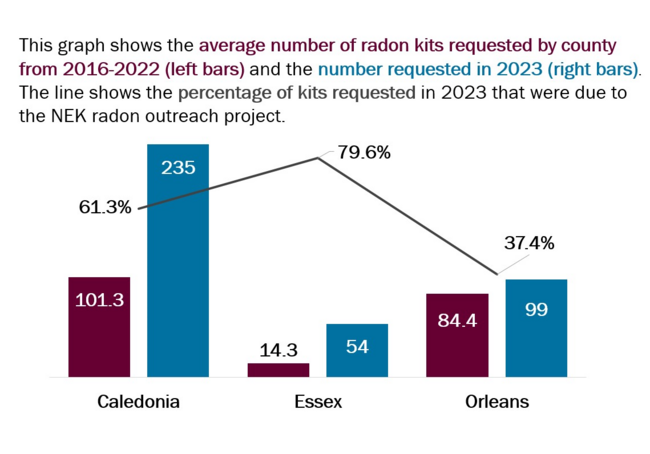Lead in drinking water at schools and child care facilities adds to a child’s lead burden
Children can come in contact with lead in many ways. Lead exposure poses a special risk to young children because they absorb lead into their systems more easily than adults do. Lead can slow down growth, impair development and learning, and can cause behavior problems.
While a major source of lead exposure in Vermont children is paint, lead in older plumbing and fixtures can add to a child’s overall lead exposure. Many Vermont schools and child care facilities are in older buildings, which means they are more likely to have lead in the plumbing. Plus, water that sits in lead plumbing and fixtures when it's not being used likely contains higher levels of lead.
Vermont Tracking helps uncover the need for statewide testing
In November 2017, the Vermont Tracking Program, in partnership with the Vermont Agency of Education and Department of Environmental Conservation conducted a pilot program to test drinking water for lead at 16 public schools. Lead was detected (above 1 ppb (parts per billion)) in the drinking water of at least three taps in all schools, and elevated lead levels (at or above 15 ppb) were found at one or more taps in five schools. Schools removed taps with elevated lead levels from service and worked with the State to find the best possible solutions to lower lead levels, which primarily involved removing or replacing older plumbing fixtures.
Building on the pilot, a new State law (Act 66) was passed in 2019 that requires all Vermont schools and child care providers to test water samples from all of the fixtures used for drinking or cooking for lead. If lead levels are found at or above the action level of 4 parts per billion (ppb), the school or child care provider must immediately take the fixture out of service and take corrective action to eliminate or reduce the amount of lead to below the action level.
Schools and child care programs have safer drinking water
Lead results for every school and child care facility are publicly available on the results website. In all, 98% (416 out of 424) of schools and 98% (751 out of 770) of non-school based child care facilities successfully completed testing. Twenty percent of the taps had initial results at or above the action level. Three-quarters of the schools (76%) and 14% of non-school based child care facilities had at least one tap with lead levels at or above the action level. Bottle fillers consistently had the lowest lead levels compared to other fixture types. Sinks were the most common tap tested and had among the highest lead levels. Six sinks had results greater than 1,000 ppb, one exceeded 25,000 ppb.
Successful remediation was possible without incurring large expenses. The most common remediation actions were fixture replacement (54%), removal from service (17%), and point-of-use filter installation (9%). Remediation costs were less than $500 per tap 90% of the time. Moving forward, schools and child care will have to retest every three years. If lead is not detected at a tap after three rounds of testing, it can be exempted from future testing requirements.
When presenting the results of the first round of testing to the Vermont State Senate Committee on Education, Health Commissioner Mark Levine, MD concluded that “we stopped thousands of kids from ingesting lead at hundreds of schools and many child cares throughout the state.”

